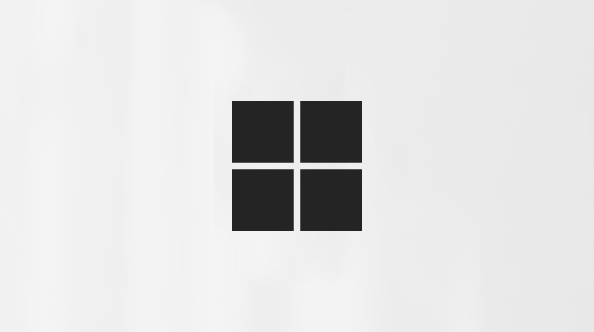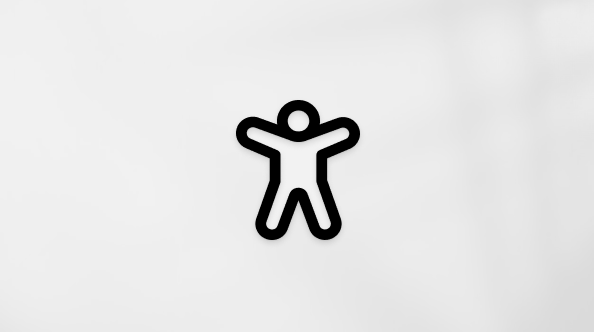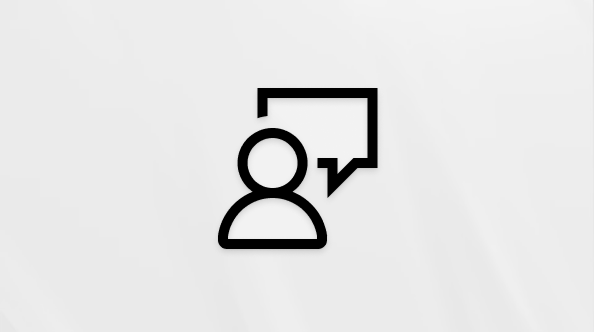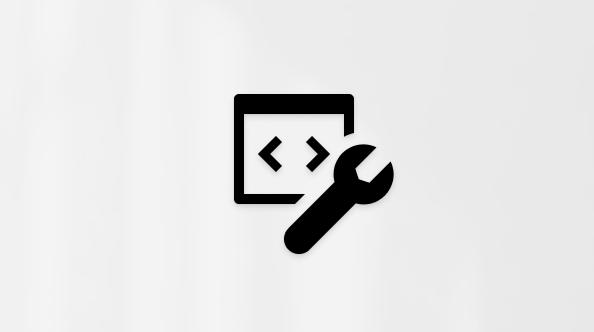Note: This article has done its job, and will be retiring soon. To prevent "Page not found" woes, we're removing links we know about. If you've created links to this page, please remove them, and together we'll keep the web connected.
This article is for people who use a screen reader program such as Windows Narrator, JAWS, or NVDA with Windows tools or features and Microsoft 365 products. This article is part of the Accessibility help & learning content set where you can find more accessibility information on our apps. For general help, visit Microsoft Support.
Outlook 2016 for the desktop is accessible by default and works with Windows accessibility features, which means you can use keyboard shortcuts, a screen reader such as Narrator or JAWS, and Windows Speech Recognition.
You can choose the features that you want to use by making settings in the Windows Ease of Access center. To learn about Windows accessibility settings, see Set up your device to work with accessibility in Microsoft 365.
Notes:
-
New Microsoft 365 features are released gradually to Microsoft 365 subscribers, so your app might not have these features yet. To learn how you can get new features faster, join the Office Insider program.
-
For keyboard shortcuts, go to Keyboard shortcuts for Outlook.
-
As of October 1, 2017, table navigation using a screen reader has been temporarily disabled.
-
This topic assumes that you are using the built-in Windows screen reader, Narrator. To learn more about using Narrator, go to Complete guide to Narrator.
-
This topic makes note of the JAWS functionality as well. To learn more about JAWS for Windows, go to JAWS for Windows Quick Start Guide.
-
This topic assumes you are using this app with a PC. Some navigation and gestures might be different for a Windows phone or tablet.
In this topic
Get to know the Outlook layout
In Outlook 2016, the name the email account that you are using is centered at the top of the screen. App controls, such as Minimize and Close, are in the upper-right corner. By default, the Quick Access Toolbar resides at the upper left of the screen. This toolbar can be customized and contains commonly used commands, such as Send/Receive All Folders, Reply, and Forward.
Below this toolbar is a set of ribbon tabs, including Home, Send/Receive, and Folder. When you select a tab, a tab-specific ribbon appears.
For example, if you select the Home tab in email, a ribbon appears. From that ribbon, you can pick different items, such as Delete, Reply, and Forward.
Outlook views offer you a range of productivity and scheduling tools.
The first time you use Outlook 2016, it opens in the Inbox. By default, the Inbox contains three panes: Folder Pane, Message List, and Reading Pane.
You can customize these in various ways. For example. the View tab ribbon includes options for the Reading Pane: Reading pane to the right of message list, Reading pane below message list, or Reading pane off.
You can find more options like this in Keyboard shortcuts for Outlook.
Calendar
To switch to the calendar, press Ctrl+2.
The first time you use the calendar, two panes appear: the Folder pane and the Calendar pane. Above these panes is the ribbon.
To learn more about calendar options, see Keyboard shortcuts for Outlook.
In the Home tab, you can choose to show only today's calendar or switch views to show a week or a month.
To see more options for the calendar, see Keyboard shortcuts for Outlook.
Contacts
To switch to the contacts list, press Ctrl+3.
The first time you use the contacts, two panes appear: the My Contacts pane (which lists folders for each set of contacts you have linked, such as your organization, Skype for Business, and other linked email accounts) and the Contacts pane, which lists names and contact information in alphabetical order. Above these panes is the ribbon.
In the Home tab, with command buttons for creating and managing contacts.
To see options for contacts, see Keyboard shortcuts for Outlook.
Tasks
The first time you use the task view, two panes appear. On the left is the My Tasks pane with a list of your to-do items; in the right pane are the tasks. The top tabs are File, Home, Send/Receive, Folder, View, and Tell Me.
To open a new task, press Ctrl+N. The new task has five tabs: File, Task, Insert, Format Text, Review, and Tell Me. As always, the ribbon changes depending on which tab you select.
For example, in the Task tab, you find Save & Close, Delete, and Forward tasks.
Under the ribbon, you can assign a subject, start date, due date, status, percent complete, and priority, and request a reminder for the task.
To see more options for tasks, see Keyboard shortcuts for Outlook.
Use Tell Me
To find an option or perform an action quickly, use the Search text field. To learn more about the Search feature, go to Find what you need with Microsoft Search.
Note: Depending on the Microsoft 365 version of you are using, the Search text field at the top of the app window might be called Tell Me instead. Both offer a largely similar experience, but some options and search results can vary.
-
Select the item or place in your document, presentation, or spreadsheet where you want to perform an action. For example, in an Excel spreadsheet, select a range of cells.
-
To go to the Search text field, press Alt+Q.
-
Type the search words for the action that you want to perform. For example, if you want to add a bulleted list, type bullets.
-
Press the Down arrow key to browse through the search results.
-
When you've found the result that you want, press Enter to select it and to perform the action.
See also
Use a screen reader to format text in your email in Outlook
Keyboard shortcuts for Outlook
Keyboard shortcuts for navigating mail in Outlook
Keyboard shortcuts for navigating the calendar in Outlook
Basic tasks using a screen reader with email in Outlook
Basic tasks using a screen reader with the calendar in Outlook
Set up your device to work with accessibility in Microsoft 365
Make your Outlook email accessible to people with disabilities
Outlook 2016 for Mac in Microsoft 365 takes advantage of accessibility features built-in to Mac OS that make it easy for users with limited dexterity, low vision, or other disabilities to work with files. You can use keyboard shortcuts, VoiceOver, and Speak tools to work with Outlook 2016 for Mac in Microsoft 365. To find out about accessibility settings and features in your device, refer to Set up your device to work with accessibility in Microsoft 365.
Notes:
-
New Microsoft 365 features are released gradually to Microsoft 365 subscribers, so your app might not have these features yet. To learn how you can get new features faster, join the Office Insider program.
-
For keyboard shortcuts, go to Keyboard shortcuts for Outlook.
-
This topic assumes that you are using the built-in macOS screen reader, VoiceOver. To learn more about using VoiceOver, go to VoiceOver Getting Started Guide.
In this topic
Get to know the Outlook for Mac layout
When you open Outlook 2016 for Mac, the Outlook menu appears at the top of the screen, with its items added after the Apple menu. Centered below this is the name of the current view or folder. By default, the Quick Access Toolbar resides to the left of the screen; it contains commonly used commands, such as Save, Undo, and Redo. On the same line and on the right side of the screen is the Search box and sharing options icon.
Below that is the Help Improve Office menu.
Under this line, you find a set of ribbon tabs, such as Home and Organize. The ribbon sits below this row of tabs. Selecting a tab brings up a tab-specific ribbon. Each ribbon includes commands organized in groups. For example, the Tools tab switches to a ribbon that lets you add accounts or import data.
Below the ribbon, what you find depends on what is currently selected (folder or view). For example, if you are in the Inbox view, the view contains a list of messages for reading and a preview pane with the contents of the currently selected message. If you're in People view, you'll find a pane on the left with categories of people, a pane in the middle with the people in that category, and another pane on the left with the contact details for the currently selected person.
At the bottom of the screen, under this main area, is a Navigation bar with views that you can select Mail, Calendar, People, or Task views.
See also
Use a screen reader to format text in your email in Outlook
Keyboard shortcuts for Outlook for Mac
Basic tasks using a screen reader with email in Outlook
Basic tasks using a screen reader with the calendar in Outlook
Set up your device to work with accessibility in Microsoft 365
Make your Outlook email accessible to people with disabilities
Outlook for iOS includes accessibility features that make it easy for users with limited dexterity, low vision, or other disabilities to work with files. This means you can use keyboard shortcuts, VoiceOver (the screen reader built-in to iOS devices), Speak dictation, increasing text size and other features such as color contrast that you can set up on your iOS device. To find out about accessibility settings and features in your device, refer to Set up your device to work with accessibility in Microsoft 365.
Notes:
-
New Microsoft 365 features are released gradually to Microsoft 365 subscribers, so your app might not have these features yet. To learn how you can get new features faster, join the Office Insider program.
-
This topic assumes that you are using the built-in iOS screen reader, VoiceOver. To learn more about using VoiceOver, visit Apple accessibility.
-
This topic assumes that you are using an iPhone. Some navigation and gestures might be different for an iPad.
In this topic
Get to know the Outlook for iOS layout
When you start the Outlook for iOS app, your email Inbox opens. The top line of the Inbox includes the Show Navigation Pane, Notification Center button, Search button, and the Compose button on the right side. Below that is a line of email filters, and below that is a vertical list of your email messages.
At the bottom of the screen, the Outlook app ribbon appears. Use the tabs to navigate to different areas:
-
Mail goes to the Inbox.
-
Calendar goes to the Calendar view.
-
Copilot goes to the Copilot chat pane.
-
Apps where you can browse other available apps.
Choose settings in Outlook for iOS
To change app settings, flick left until you hear "Menu, followed by your mail id," then double-tap. Next, flick right to find the Settings button and double-tap to open it.
Flick right to move down through the settings and flick left to move up through them. To open the setting you just heard, double-tap.
The settings options are as follows:
Quick settings
-
Display & Appearances: Switch between light, dark, or system default themes.
-
Signature: Set up signatures for different email accounts.
-
Automatic Replies: Sends prewritten responses to incoming emails.
-
Notifications & Sounds: Change things like which emails you're notified about, the sound used for notifications, and so on.
General
-
Accounts: Add or create an outlook account.
-
Mail: Customize how your emails are sent, received, and displayed.
-
Calendar: Customize events, notifications, and time zones in your outlook calendar.
-
Contacts: allow you to manage contacts in your outlook.
-
Face ID: Allow you to lock the app and require Face ID authentication to access your emails.
-
Privacy: Controls how your data is handled, shared, and secured while using the app.
Email settings
You can set Email options by double-tapping any of these buttons:
Note: On each Settings page, slide down to hear options and then follow the instructions for each control to change its setting. When you're done changing settings on a page, move the focus to the Back button in the upper-left corner, and then double-tap. Repeat as needed to return to the Settings page.
-
Focused Inbox: Turn Focused Inbox on or off. By default, it's on, causing Outlook to intelligently place the highest priority emails in the Focus list of your Inbox.
-
Badge Count. Select whether Outlook shows the unread mail only for your Focused inbox or for all emails.
-
Email Organisation: Arrange the reading pane, either newest on top or newest on bottom.
-
Email Auto-advance: Choose what happens after you delete or move an email.
-
Swipe Options: Change what actions the Outlook app takes for right and left swipe.
-
Read Receipts: Choose how to respond to requests for read receipts.
-
Suggested Replies: Suggests context-based responses for emails.
-
Text Predictions: suggests words or phrases as you type an email.
Calendar settings
You can any of these buttons to set Calendar options, by double-tapping the button. Change things like the default notification period for events, the sound used for notifications, and so on.
-
Default: Specify the calendar to display by default.
-
Week Start: Specify which day to use as the start of the week in the Calendar.
-
Week Numbers: Display the sequential number of each week in a year.
-
Show Weather: Display the weather forecast for a selected location directly in your calendar.
-
Shorten All Events: Automatically reduces the duration of meetings and appointments.
-
Online Meetings: Schedule or join virtual meetings using Microsoft Teams.
-
Workspace Booking: Reserve shared workspaces (such as desks, conference rooms) directly from outlook calendar.
-
Interesting Calendars: Subscribe to calendars related to sports, holidays, and other events.
See also
Use a screen reader to format text in your email in Outlook
Basic tasks using a screen reader with email in Outlook
Basic tasks using a screen reader with the calendar in Outlook
Set up your device to work with accessibility in Microsoft 365
Make your Outlook email accessible to people with disabilities
Outlook for Android includes accessibility features that make it easy for users with limited dexterity, low vision, or other disabilities to work with files. You can use keyboard shortcuts, Talkback (the screen reader built-in to Android devices), and other features such as color contrast that you can set up on your Android device. To find out about accessibility settings and features in your device, refer to Set up your device to work with accessibility in Microsoft 365.
Notes:
-
New Microsoft 365 features are released gradually to Microsoft 365 subscribers, so your app might not have these features yet. To learn how you can get new features faster, join the Office Insider program.
-
This topic assumes that you are using the built-in Android screen reader, TalkBack. To learn more about using TalkBack, go to Android accessibility.
-
This topic assumes you are using this app with an Android phone. Some navigation and gestures might be different for an Android tablet.
In this topic
Get to know the Outlook for Android layout
When you start the app the first time, Outlook for Android presents a heading at the top, the main content in the middle, and a menu bar at the bottom of the screen. On the left side of the Outlook heading is the Open Navigation Drawer button and the name of the current view, such as Inbox or Files. On the right side of the Outlook heading are the Search and Settings commands.
After the first time, Outlook starts in Inbox.
At the bottom of the screen, a menu bar contains the following four commands:
-
Mail goes to the Inbox.
-
Calendar goes to the Calendar view.
-
Files goes to the Files view, where you can browse files from your email accounts, those stored on OneDrive, and more.
-
People goes to the People view, which shows your contacts.
Between the heading at the top and the menu bar at the bottom is the main content for the screen: the email inbox, the calendar, the list of your files, or your list of people or contacts.
Settings for Outlook for Android
To set up Outlook the way you want, use Settings.
-
To change your Outlook settings, in the upper-right corner of the screen, move the focus to the Settings tab and double-tap.
-
To hear the available settings, slide down the screen. To scroll down, swipe up with two fingers. To scroll up, swipe down with two fingers. To open and get more information about the setting you just heard, double-tap. To turn a setting on or off, move to the On/Off switch and double-tap. Following are some of the available settings:
-
Help & Feedback opens a screen you can use to contact support, suggest a feature, get answers to frequently asked questions, or troubleshoot a problem.
-
Accounts contains the list of email or storage accounts you've added to the Outlook app. To change any account settings, select an account. To add a new email or storage account, slide until you hear "Add Account" and double-tap.
-
Mail contains email-related settings you can use to set your notifications, the default email account, your signature, swipe options, and more.
-
Calendar contains event-related settings you can use to set your notifications, the default calendar, and the week start for your calendar.
-
Preferences contains accessibility settings.
-
More contains commands to invite others to use the Outlook app and to explore additional Microsoft apps for Android.
-
-
When you're done changing settings on a page, in the upper-left corner, move the focus to the Navigate Up button and double-tap.
See also
Use a screen reader to format text in your email in Outlook
Basic tasks using a screen reader with email in Outlook
Basic tasks using a screen reader with the calendar in Outlook
Set up your device to work with accessibility in Microsoft 365
Make your Outlook email accessible to people with disabilities
Outlook Mail and Outlook Calendar include accessibility features that make it easier for people with disabilities like limited dexterity, low vision, or other disabilities to chat privately or in teams.
Notes:
-
New Microsoft 365 features are released gradually to Microsoft 365 subscribers, so your app might not have these features yet. To learn how you can get new features faster, join the Office Insider program.
-
This topic assumes that you are using the built-in Windows screen reader, Narrator. To learn more about using Narrator, go to Complete guide to Narrator.
-
This topic assumes you are using this app with a Windows phone. Some navigation and gestures might be different for a tablet or PC.
In this topic
Get to know the Outlook Mail layout
When you open the Outlook Mail app, your email Inbox is shown. The top line of the Inbox includes the Navigation button on the far left. To expand the button, double-tap the screen. A navigation pane opens listing your email accounts and your favorite Outlook Mail folders. Further to the right on the top line, in the middle of the screen, is the heading "Inbox", followed by the account type. To the far left, there's the Filter button.
Below the top line, there's a list of your emails. By default, the latest email is listed first.
Below the email list, there's a toolbar with the following buttons:
-
New: Compose a new email.
-
Select: Select emails one by one or select all emails.
-
Sync: Update your Inbox.
-
Search: Search for emails.
-
More options: Expand and collapse a list with the following options:
-
Unpin from Start or Pin to Start: Remove or add the app shortcut on the Start screen.
-
Manage accounts: Change accounts settings or add new accounts.
-
Settings: Change settings, for example, app colors and automatic replies.
-
Email reading view
When an email is open, the email details such as sender and subject are shown at the top of the screen. Below the details, the message body takes up most of the space on the screen. Below the message, there's a toolbar containing the following buttons:
-
Respond: Reply to, reply to all, or forward the email.
-
Delete: Delete the email.
-
Newer: Move to a newer email.
-
Older: Move to an older email.
-
More options: Expand and collapse a list of the following options:
-
Mark as unread: List the email as unread in the Inbox.
-
Set flag or Clear flag: Add or remove a flag.
-
Move: Move the email to another folder.
-
Find: Search in the email.
-
Save as: Save a copy of the email.
-
Email composing view
When you're composing an email, the receiver and subject fields are shown at the top of the screen. Below them, the message body takes up most of the space on the screen. Below the message, there's toolbar containing the following buttons:
-
Discard: Delete the draft.
-
Attach: Add attachments.
-
Send: Send the email.
-
More options: Open the ribbon for editing and reviewing options.
See also
Use a screen reader to insert a picture or image in an email in Outlook
Use a screen reader to insert a hyperlink in Outlook
Basic tasks using a screen reader with email in Outlook
Make your Outlook email accessible to people with disabilities
Outlook Web App includes accessibility features that make it easy for users with limited dexterity, low vision, or other disabilities to chat privately or in teams. This means you can use the accessibility features that are built in to your device or computer, such as a screen reader, contrast controls, or dictation tools to work with Outlook Web App. To find out about accessibility settings and features in your device, refer to Set up your device to work with accessibility in Microsoft 365.
In addition, Outlook Web App offers a feature that lets you request accessible email messages from others. For more information, go to Request accessible emails.
Notes:
-
The Mail related instructions are documented with the Reading Pane off.
-
The Calendar related instructions are documented using the default layout.
-
New Microsoft 365 features are released gradually to Microsoft 365 subscribers, so your app might not have these features yet. To learn how you can get new features faster, join the Office Insider program.
-
For keyboard shortcuts, go to Keyboard shortcuts in Outlook on the web.
-
This topic assumes that you are using the built-in Windows screen reader, Narrator. To learn more about using Narrator, go to Complete guide to Narrator.
-
This topic assumes you are using this app with a PC. Some navigation and gestures might be different for a Windows phone or tablet.
-
When you use Outlook Web App, we recommend that you use Microsoft Edge as your web browser. For more information, refer to Microsoft Edge help. Because Outlook Web App runs in your web browser, the keyboard shortcuts are different from those in the desktop program. For example, you'll use Ctrl+F6 instead of F6 for jumping in and out of the commands. Also, common shortcuts like F1 (Help) and Ctrl+O (Open) apply to the web browser - not Outlook Web App.
In this topic
Get to know the Outlook Web app layout
The layout of Outlook Web App conforms to the most recent international guidelines about accessible keyboard navigation. If you're using certain keyboard shortcuts specific to your screen reader, you can take advantage of the ARIA markup on the page.
Mail layout
Note: For the best user experience, we recommend turning the Reading Pane off and showing emails as Messages and not as Conversations. To turn off the Reading Pane and Conversations, press Ctrl+Alt+A.
When you open Mail in Outlook Web App, the main view is displayed first. The focus is on the messages list, with the latest email selected.
The horizontal navigation bar is at the top of the screen below the URL address field. It contains the following buttons: the App Launcher on the left, then the pinned apps (if you have any), Skype, Notifications, Settings, Help, and the user status buttons.
Below the navigation bar, the main view is divided into two areas. On the left, there's a navigation pane that contains a search field on the top, and a list of email folders and groups. On the bottom of the navigation pane, you can find the quick access buttons for Mail, Calendar, Contacts, and Tasks. Press the Tab key to move between the items in this pane.
Next to the navigation pane to the right is the message list view which takes up most of the screen. Your emails are listed here. Above the message list, there are the Focused and Other tabs, the Filter button, the next calendar event, and the Agenda button.
To open an email, in the message list, press Caps Lock+Enter. The email replaces the message list on the screen. To enter Scan Mode and navigate the opened email, press Caps Lock+Spacebar. When you compose an email, the mail composer window replaces the message list on the screen.
Above the message list, below the navigation bar, there's a toolbar. When an email is selected in the message list, the toolbar displays the buttons for the most frequent tasks such as creating a new email and replying to an email. Press the Tab key to move to the first item on the toolbar, and then press the Left or Right arrow keys to move on the toolbar. If you haven't selected an email, the toolbar contains only the New button.
Note: To open a list of the Outlook Web App keyboard shortcuts, press the Question mark (?) key.
Calendar layout
When you open Calendar in Outlook Web App, you hear the current date and whether there are events for that day. You also hear the total number of events for the current month.
The horizontal navigation bar is at the top of the screen below the URL address field. It contains the following buttons: the App Launcher on the left, then the pinned apps (if you have any), Skype, Notifications, Settings, Help, and the user status buttons.
Below the navigation bar, the main view is divided into three areas. On the left, there's a navigation pane that contains a search field on the top. Below the search, there's a compact monthly calendar and a list of other calendars and groups. At the bottom are the quick access buttons for Mail, Calendar, Contacts, and Tasks. Press the Tab key to move between the items in this pane.
Next to the navigation pane on the right, the calendar for the current month takes up most of the screen. Press the Tab key to move between the calendar events. The current month and year are shown above the calendar. Press the Tab key or Shift+Tab until you hear them announced. In addition, there are buttons for selecting the previous or next month, and a month picker.
On the right, the Agenda view lists the events happening on the day you have selected in the calendar view. Press the Tab key to move between items in the pane. To open an event, press Enter. To exit an event, press Esc.
Above the Agenda view, there are buttons to change the view in the main calendar. You can select from the following options: Day, Work week, Week, Month, and Today. Press the Tab key to move to the current selection, and then press the Left or Right arrow keys to move in the options. To select an option, press Spacebar.
Above the calendar view and the Agenda view, below the navigation bar, there's a toolbar. It contains buttons, for example, for creating a new calendar event and sharing a calendar. Press the Tab key to move to the first item on the toolbar, and then press the Left or Right arrow keys to move on the toolbar.
Navigate using the keyboard
To cycle through landmark elements, press Ctrl+F6 (forward) or Shift+Ctrl+F6 (backward). To navigate among and within actionable elements, press the Tab key and arrow keys as appropriate. To move between items in menu options lists, press the Up or Down arrow key. To select an item in a list, press Enter or Spacebar. To expand a collapsed menu list, press Spacebar. To close a dialog or move the focus back, press Esc. To open a context menu (where available), press Shift+F10 or the context menu key.
To access the Microsoft Edge Search field, press Ctrl+F.
For more details, refer to Keyboard shortcuts in Outlook on the web.
Special considerations for Outlook Web app
In Outlook Web App, you can discreetly let your contacts know that you prefer accessible emails.
Request accessible emails
Whenever a sender using Outlook Web App adds you as a recipient for an email, the sender receives a notification that you prefer accessible content, and a link to the accessibility checker. If the checker finds any accessibility issues in the email, the issues will be listed, along with instructions on how to fix them.
-
Press the Tab key until you hear "Setting button" and then press Enter.
-
In Setting dialog, Press the Tab until you hear "General" and then press Enter.
-
Press the Down arrow key until you hear "Accessibility setting" and then press Enter.
-
Press the Tab key until you hear "Unchecked, Ask sender to send content that's accessible" and then press Spacebar.
-
Press the Tab key until you hear "Save button" and then press Enter.
Note: To turn off this feature, navigate to the accessibility settings as instructed above. Press the Tab key until you hear "Checked, Ask sender to send content that's accessible" and then press Spacebar. Press the Tab key until you hear "Save button" and then press Enter.
See also
Use a screen reader to format text in your email in Outlook
Keyboard shortcuts in Outlook on the web
Basic tasks using a screen reader with email in Outlook
Basic tasks using a screen reader with the calendar in Outlook
Make your Outlook email accessible to people with disabilities
Technical support for customers with disabilities
Microsoft wants to provide the best possible experience for all our customers. If you have a disability or questions related to accessibility, please contact the Microsoft Disability Answer Desk for technical assistance. The Disability Answer Desk support team is trained in using many popular assistive technologies and can offer assistance in English, Spanish, French, and American Sign Language. Please go to the Microsoft Disability Answer Desk site to find out the contact details for your region.
If you are a government, commercial, or enterprise user, please contact the enterprise Disability Answer Desk.










